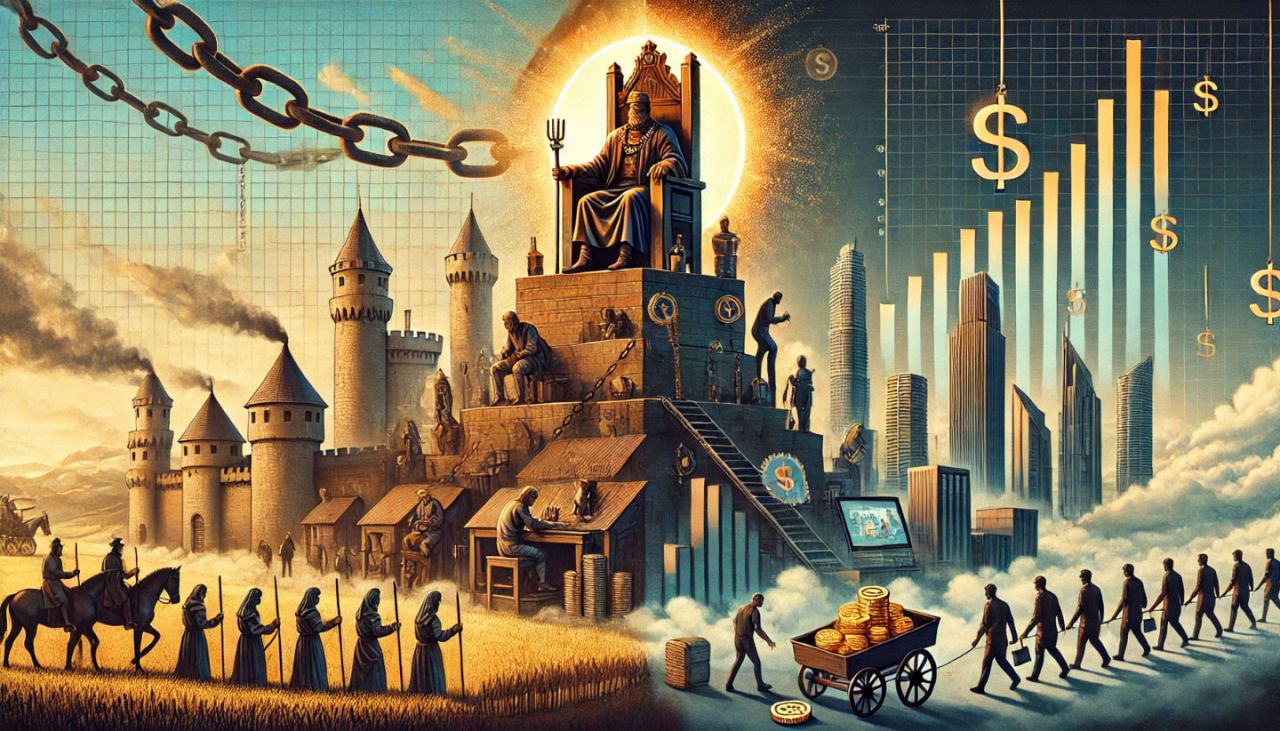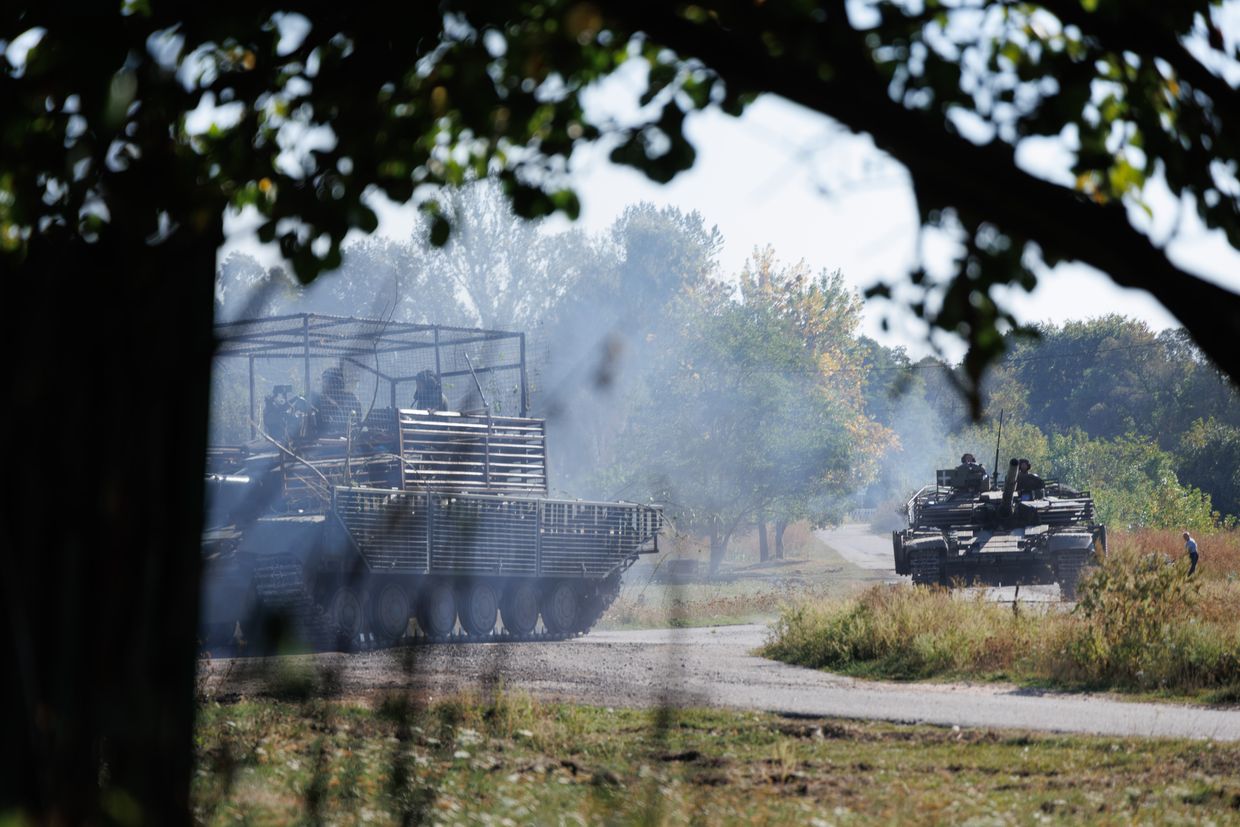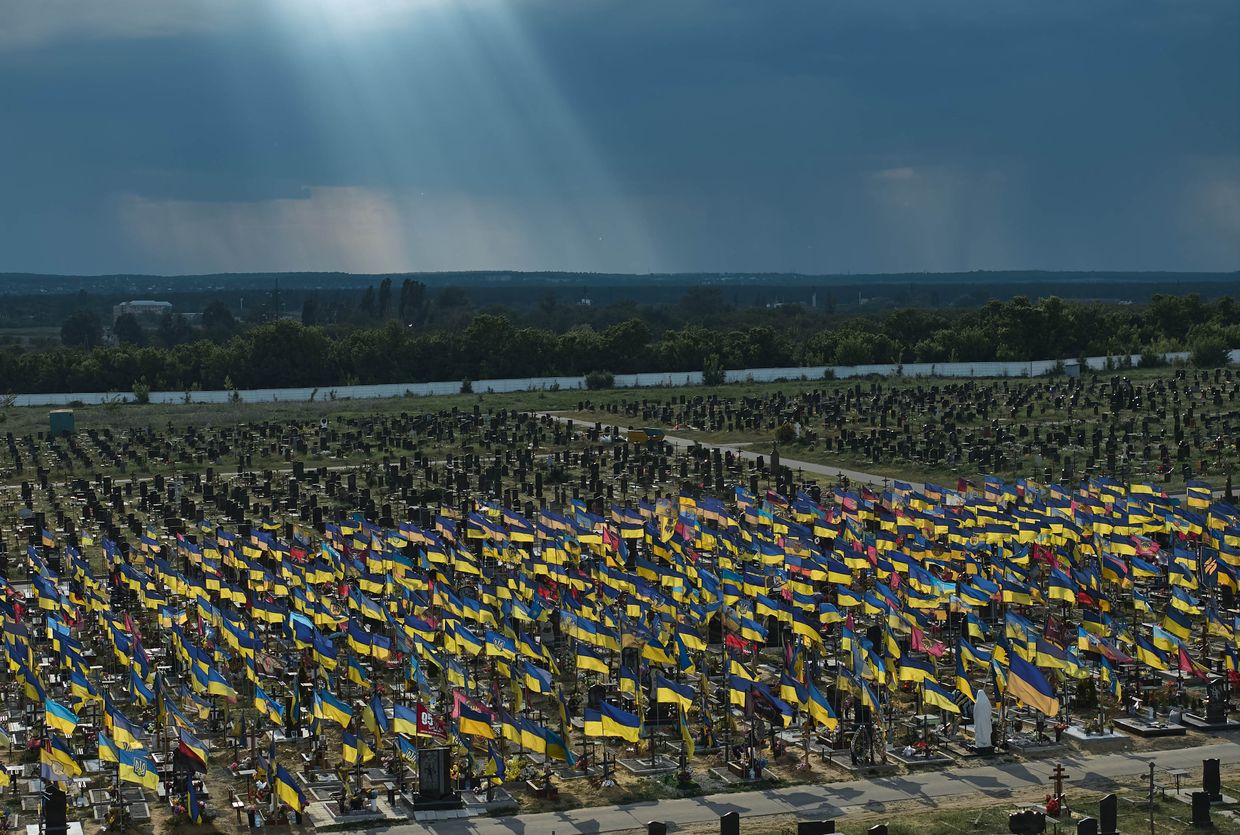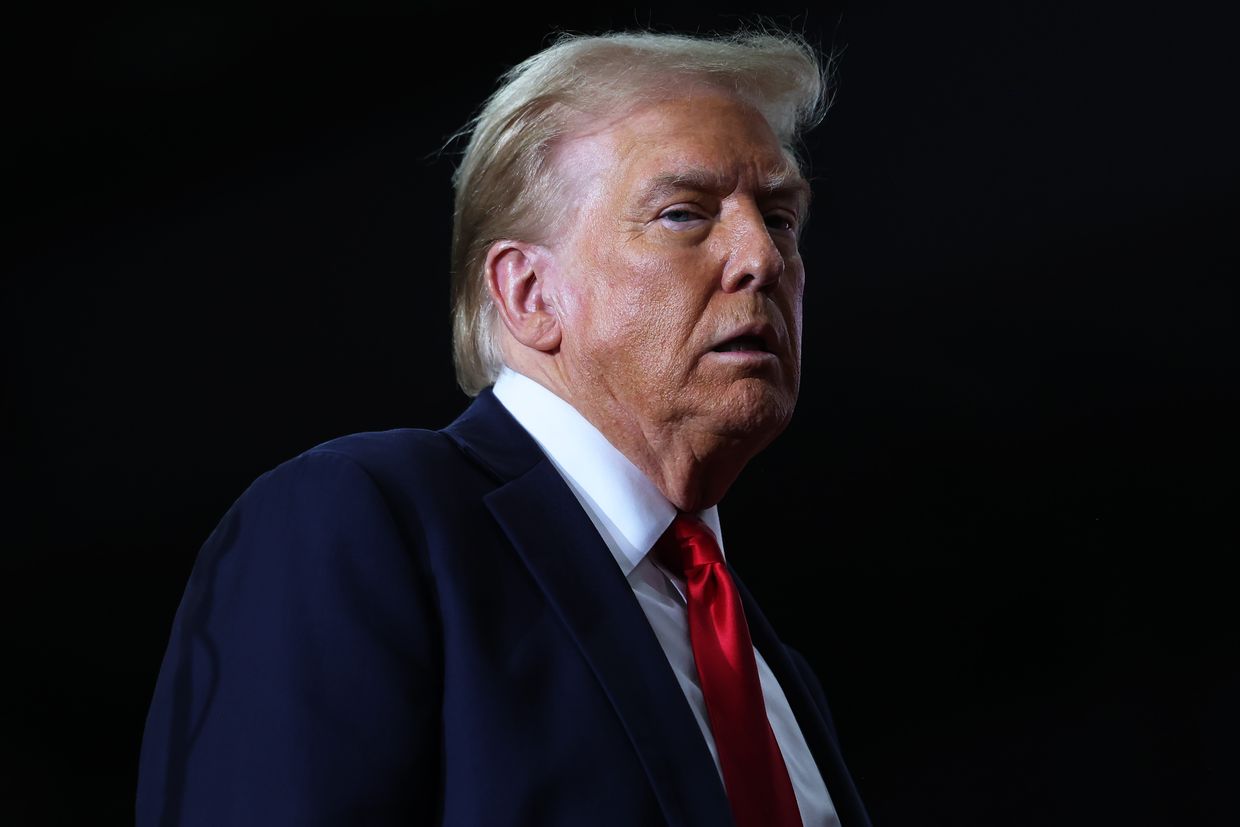1. Feudalism and Aristocracy: Foundations of Power Concentration
Feudalism, dominant in medieval Europe, was a system where wealth and power were concentrated in the hands of landowning elites. These feudal lords exercised near-sovereign control over their domains, often bypassing or outright resisting central authority.
Similarly, aristocratic classes across Europe maintained their dominance by aligning with monarchs to extract privileges, while central authorities relied on their military and economic support.
Key features of feudal and aristocratic dominance included:
- Localized Authority: Lords had judicial and military power over their territories.
- Hereditary Privilege: Wealth and power were passed down through generations.
- Minimal Accountability: Central rulers lacked mechanisms to control their elite supporters fully. Modern oligarchs exhibit a similar evasion of accountability, using corruption and infiltration of legal systems to protect their wealth and influence, much like feudal elites resisted royal oversight.
For instance, the English Magna Carta (1215) exemplifies aristocratic elites compelling the monarchy to formalize their privileges, ensuring they operated above common legal standards. Similarly, the boyar class in Tsarist Russia wielded significant power, often acting as semi-independent rulers while extracting wealth from their serfs.
2. Transition to Modern Oligarchies
The collapse of feudal systems gave rise to new forms of elite dominance. Industrialization in the 19th century shifted power from landowners to industrialists, culminating in the emergence of “robbier barons” during the Gilded Age. These tycoons leveraged their wealth to influence governments and laws, evading accountability while reshaping economies.
In the 20th century, the fall of the Soviet Union created fertile ground for the rise of Russian oligarchs. Through rapid privatization, a small group of individuals acquired control over vast state assets, particularly in energy and natural resources.
These oligarchs, much like feudal lords, formed symbiotic relationships with political leaders, consolidating power and shielding themselves from legal repercussions.
3. Similarities Between Historical and Modern Elites
Modern oligarchs share several characteristics with historical feudal and aristocratic elites:
- Concentration of Wealth: Feudal lords controlled land; modern oligarchs dominate industries, finance, and resources.
- State Manipulation: Both groups influence governments to maintain their privileges. Feudal lords resisted royal decrees, while today’s oligarchs lobby for favorable policies or bypass laws through offshore mechanisms.
- Global Ambitions: Just as colonial-era aristocrats exploited global resources, modern oligarchs use transnational networks to expand their power and wealth.
- Legal Immunity: Historical elites often operated outside the jurisdiction of monarchs, akin to modern oligarchs leveraging tax havens and international loopholes.
4. Case Study: Russian Oligarchs and Global Influence
Post-Soviet Russia epitomizes the rise of modern oligarchs. Figures like Roman Abramovich and Oleg Deripaska amassed fortunes during the chaotic 1990s privatizations, establishing themselves as powerful actors within and beyond Russia.
These individuals often relied on connections with organized crime structures to secure their positions, utilizing illicit networks for money laundering, asset acquisition, and enforcement.
This period also saw the influence of former KGB operatives, who played pivotal roles in facilitating these relationships and integrating organized crime into the broader framework of oligarchic power.
These oligarchs maintain close ties to President Vladimir Putin, providing financial and political support in exchange for protection and influence. Beyond Russia, the KGB’s successor, the FSB, and related networks have extended their reach into Western financial and political systems.
This includes activities such as real estate acquisitions in major cities and donations to political campaigns, further intertwining global elites with Russian oligarchic ambitions. Many of these relationships can be traced back to the KGB, where Putin himself was an operative.
The KGB and its successor, the FSB, played a pivotal role in intertwining state security apparatus with oligarchic operations, fostering an environment where wealth and power were leveraged to serve both personal and state objectives.
This integration ensured that oligarchs not only flourished economically but also became key instruments in advancing the regime's geopolitical ambitions.
In the context of Russia’s geopolitical ambitions, oligarchs play a pivotal role:
- Economic Foundations: Their control over industries like energy and defense underpins Russia’s ability to project power.
- International Influence: Oligarchs use their wealth to lobby foreign governments, sponsor propaganda campaigns, and evade sanctions.
- Legal Evasion: By exploiting international financial systems, they secure assets abroad while avoiding domestic accountability. Organized crime methods, such as money laundering, play a crucial role in these activities, allowing oligarchs to obscure the origins of their wealth and evade sanctions. These tactics intertwine financial activities with illicit networks, further complicating efforts to hold them accountable on a global scale.
5. Historical Moments of Global Elite Ambitions
The oligarchic push for global dominance is not without precedent. Key historical parallels include:
- Colonial Expansion (16th–19th Century): European aristocrats funded and profited from colonial ventures, exploiting resources and populations globally. For example, the British East India Company operated as a quasi-sovereign entity, wielding military power and engaging in territorial conquests while extracting immense wealth from India. Similarly, Spanish conquistadors like Hernán Cortés and Francisco Pizarro amassed fortunes through brutal subjugation of the Aztec and Inca empires.
- The Gilded Age (19th Century): Industrial tycoons like John D. Rockefeller and Andrew Carnegie manipulated laws and governments to amass wealth and evade regulation. Rockefeller’s Standard Oil Trust controlled nearly 90% of the U.S. oil industry, using monopolistic practices to crush competitors, while Carnegie’s steel empire exploited workers and opposed labor unions, consolidating immense wealth at the expense of societal equity.
- Fascist Collaborations (1930s): Wealthy elites in Germany and Italy supported authoritarian regimes, profiting from militarism and expansion. German industrialists like the Krupp family and IG Farben collaborated with the Nazi regime, benefiting from state-sponsored contracts and forced labor while aiding Hitler’s war machine. Similarly, Italian business magnates supported Mussolini in exchange for favorable policies and economic advantages.
- Post-Colonial Neo-Imperialism (20th Century): Multinational corporations, often controlled by elites, wielded disproportionate power in developing nations, destabilizing governments to protect their interests. For instance, the United Fruit Company in Latin America influenced U.S.-backed coups, such as the 1954 overthrow of Guatemala’s democratically elected government, to safeguard its economic dominance.
6. Projected Outcomes of Modern Oligarchic Dominance
This section examines the broader implications of unchecked oligarchic dominance and how these patterns echo historical precedents, focusing on specific trends that emerge when wealth and power concentrate in elite hands:
- Erosion of Democratic Institutions: Concentrated wealth undermines accountability and distorts political processes.
- Entrenchment of Inequality: A global elite class could become akin to hereditary aristocracies, perpetuating inequality across generations.
- Global Instability: Just as feudal and colonial systems fueled wars and uprisings, unchecked oligarchic power may exacerbate conflicts and societal tensions.
- Environmental and Economic Exploitation: Oligarchs’ prioritization of profit over sustainability could lead to resource depletion and economic crises.
These outcomes not only impact societies on a systemic level but directly affect ordinary citizens, as explored in the following section, "How Does This Affect You?"
7. How Does This Affect You, the Regular Citizen?
The impact of oligarchic dominance extends beyond geopolitics to touch the lives of regular citizens. Under both feudal and oligarchic systems, the ordinary person often finds themselves at the mercy of elites who prioritize personal gain over societal well-being.
Here’s how this dynamic unfolds:
- Economic Disempowerment: In feudal systems, peasants were tied to the land and owed significant portions of their output to lords. Similarly, in modern oligarchies, wealth inequality grows as oligarchs monopolize industries, driving up living costs and suppressing wages.
- Loss of Political Agency: Feudal serfs had little say in governance, and their lives were dictated by the whims of their lords. Modern oligarchies erode democratic processes, as elites influence laws and policies that serve their interests, leaving regular citizens disenfranchised. Actionable steps include advocating for transparency initiatives, supporting anti-corruption measures, and educating others about the risks of wealth inequality.
- Legal Vulnerability: In both systems, elites operate above the law while regular people face stricter penalties and fewer protections. The increasing use of tax havens and legal loopholes by oligarchs underscores the disparity in accountability.
- Social Fragmentation: Feudal societies were highly stratified, with rigid class hierarchies. Today, the wealth gap fosters societal division, limiting upward mobility and creating tensions between the "haves" and "have-nots."
- Environmental and Social Exploitation: Feudal lords often exploited natural resources without concern for long-term sustainability, much like modern oligarchs prioritize profit over environmental preservation. This exploitation disproportionately impacts ordinary citizens who suffer from pollution, climate change, and depleted local resources.
The lesson is clear: these processes are not distant, abstract phenomena. History shows that when elites consolidate power unchecked, the average person pays the price.
Recognizing these patterns allows us to take collective action, steering history toward a more equitable future rather than repeating cycles of inequality and disenfranchisement.
Conclusion From feudal lords to modern oligarchs, the dynamics of concentrated power remain remarkably consistent. The parallels between historical elites and today’s oligarchs underscore the enduring challenges posed by wealth and power consolidation.
Addressing these dynamics requires robust legal frameworks, international cooperation, and public accountability to prevent history from repeating itself.
By learning from the past and acting decisively, societies can chart a course toward a more equitable and just future, ensuring fairness and accountability prevail over unchecked dominance.
References
- Blum, Jerome. Lord and Peasant in Russia: From the Ninth to the Nineteenth Century. Princeton University Press, 1961.
- Hosking, Geoffrey. Russia and the Russians: A History. Harvard University Press, 2001.
- Klein, Naomi. The Shock Doctrine: The Rise of Disaster Capitalism. Metropolitan Books, 2007.
- Frankopan, Peter. The Silk Roads: A New History of the World. Vintage, 2015.
- BBC. “What Are Russian Oligarchs?” https://www.bbc.com/news/world-60700036.
- The Guardian. “The Rise and Fall of the Russian Oligarchs.” https://www.theguardian.com/world/2022/mar/01/russia-oligarchs-rise-fall.
- OpenDemocracy. “How Oligarchs Shape Global Politics.” https://www.opendemocracy.net/en/oligarchs-global-politics-2022/.















